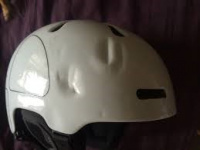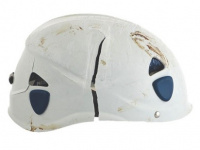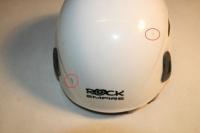Helme
What we will check:
Deformation
Abrasion
Burrs
Cracks and fissures
Moving parts
Pins and springs
Finishing the straps
Chemical damage
Thermal damage
Intact seams
Deformation:
if any plastic part or plastic component is deformed, or if there are white lines on the helmet (zigzagging or web-shaped), this is a sign of deformation (impact) and therefore a reason to discard
Abrasion:
if the abrasion on any part of the product is more than 10%, the product must be discarded. An example of abrasion that is below the stated 10% and the product does not need to be discarded:
Burrs:
burrs and other sharp edges must be removed with a needle file. However, a maximum of 10% compared to a new product. If the damage exceeds the permitted limit, the product must be discarded.
Cracks and fissures:
if cracks or tears are visible on the product or its components, the product must be discarded. Example of cracks when the product needs to be discarded:
Moving parts:
if the momentum of some moving parts is limited, use the recommended lubricant. If the problem persists, the product must be removed from further use.
Pins and springs:
if some parts of the plastic products or components show deformation of the pins, or other of the above-mentioned damages, or if the springs do not work properly, the product must be discarded.
Chemical damage:
if the coloring of plastic products or components does not disappear after cleaning, or changes its shape when touched and rubbed, or color, the product must be discarded. An example of chemical damage that is still OK and does not require discarding the product:
Thermal damage:
if plastic products or components are blackened even after cleaning (soot), or have a glassy surface or crumble when rubbed, the product must be discarded.






